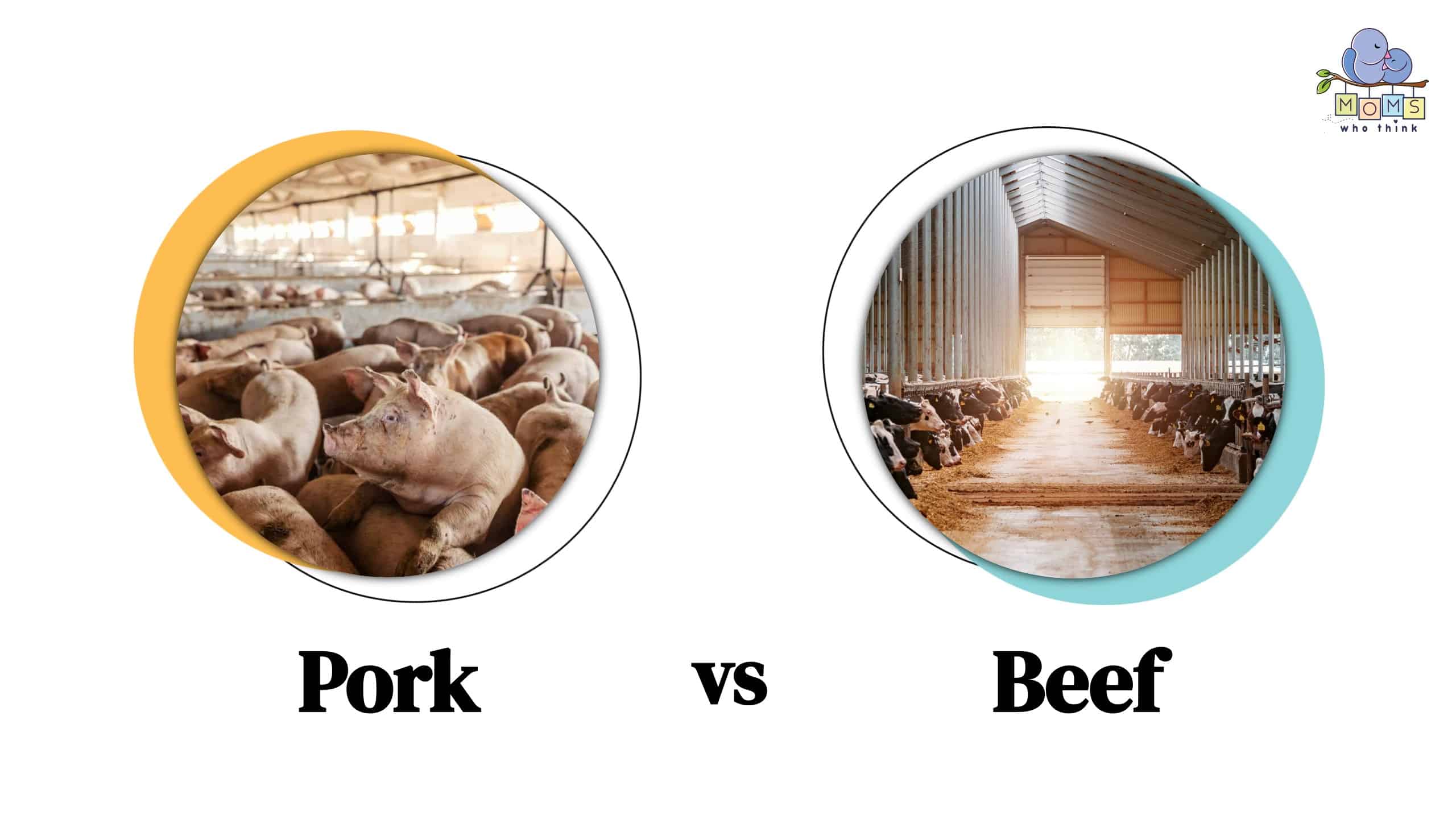Pork is the name given to the meat we garner from pigs. On the other hand, beef is the name given to the meat taken from cows. Apart from the noticeable difference of being different animals, we will cover a few more differences in this post. Those differences are taste, texture, preparation, and appearance.
- The must-have convenient reference guide for every home cook!
- Includes more than 8,000 substitutions for ingredients, cookware, and techniques.
- Save time and money on by avoiding trips to grab that "missing" ingredient you don't really need.
Pork vs. Beef: What are the Differences?
It is prevalent to have some meat with our meals around the world. Two of the most common meats are either pork or beef. While there are a few similarities between the two, they are both high in calories and saturated fat; there are some differences too! Let's take a look at those differences in more depth below.
When it comes to appearance, beef, and pork vary immensely. Pork is typically greyish-pink and light in color. On the other hand, beef is a dark red.
One of the determining factors in tenderness when it comes to meat is marbling. Marbling is the white streaks of fat throughout the meat's muscles. The marbling will determine precisely how much fat content exists. Marbling is also an element in both beef and pork.
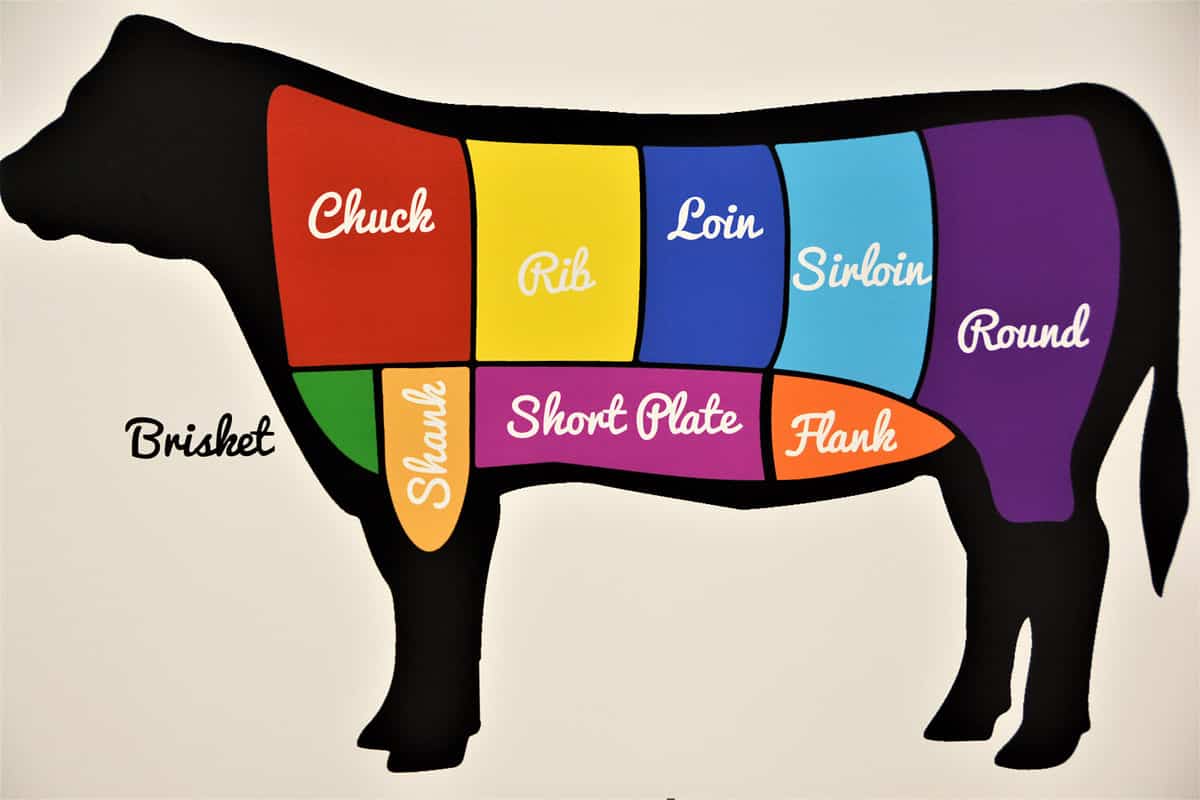
This chart is a great illustration of where exactly each cut of beef lands on a cow.
©Jim Lambert/Shutterstock.com
Texture and Taste
One of the first differences we will discuss is the texture and taste of these two types of meat. One can eat various cuts of meat from both of these animals. We can choose steak, ground beef, brisket, and more from beef. How each cut tastes will vary.
The same is true for pork. If we choose to eat bacon, it will taste a bit different than ham. With that said the taste between pork and beef does vary greatly. Beef is robust, meaty, and has a powerful flavor. Many people will marinate their beef or season it with hearty flavors.
Pork has a sweet undertone that beef does not carry. The flavor is milder and pairs excellently with sweeter sides like sweet potatoes or cranberries.
Another difference is the texture between the two. Your beef and pork texture will depend on how you prepare the meat. The marbling and fat content also affect your meat's texture. However, beef tends to be more textured than pork.
Preparation Methods
Pork and beef both can be prepared in very similar fashions. They take well to grilling, braising, roasting, and grounding the meat.
The actual test of which preparation method to choose will come down to which cut of meat you have. There are cuts of meat from these animals that are great for roasting but do not take well to grilling and some that are great for grilling but not roasting.
You must ensure the internal temperature reaches 145 degrees Fahrenheit when cooking your pork. However, the internal temperature of beef should be 160 degrees Fahrenheit.
Pork vs. Beef Nutritional Value
When it comes to the nutritional value of beef and pork, it will vary. Both tend to be higher in fat content and calories. But, while they provide plenty of protein and iron, the values are neck-to-neck. Take a look below at the nutritional value comparison chart.
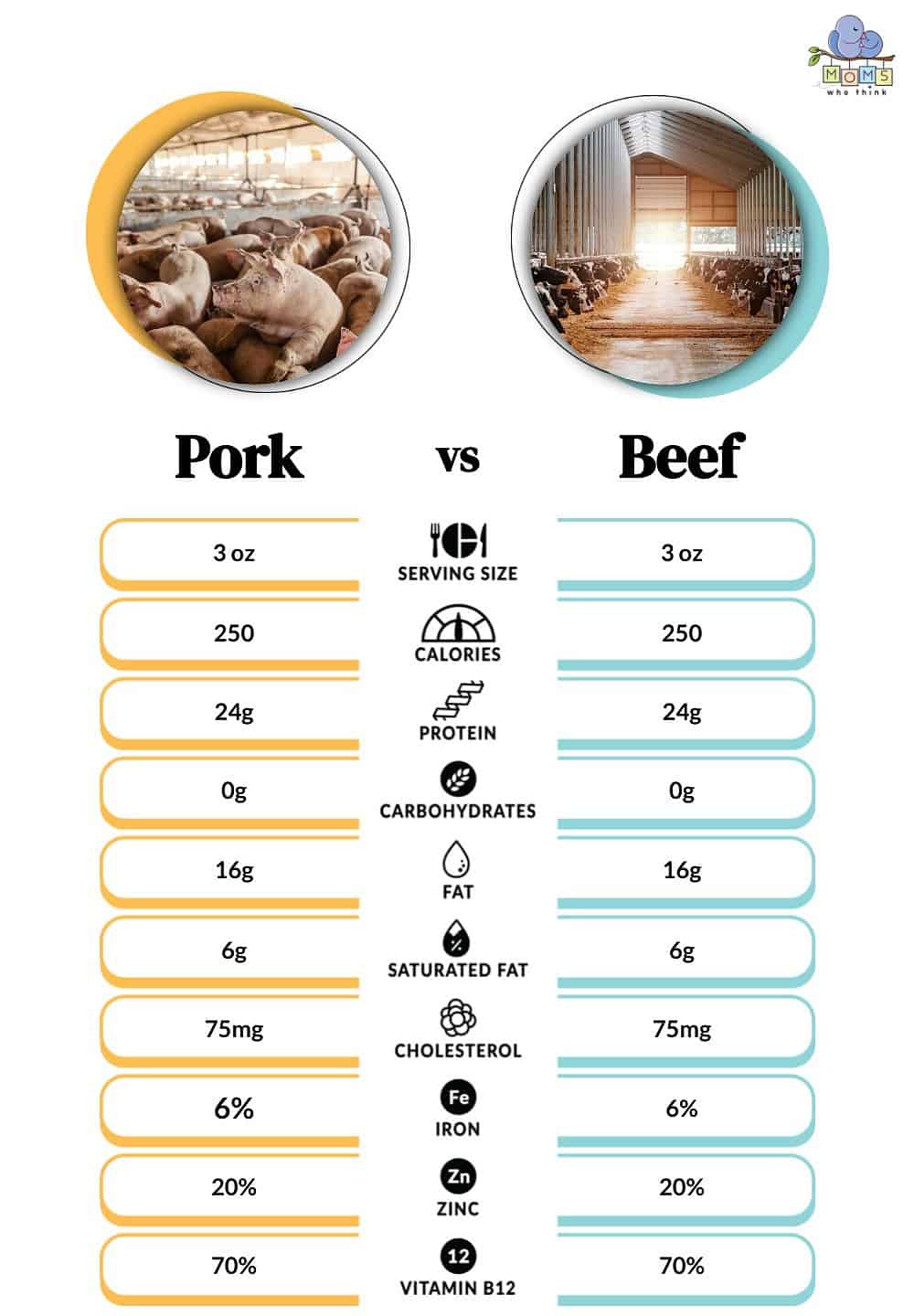
©
What Is Pork?
Pork is the meat we eat that derives from the pig. Many different types of meat come from pork. These are:
- Pork chops
- Pork loin
- Tenderloin
- Bacon
- Sausage
- Ham
- Pork shoulder
- Pork butt
These are just a few of the cuts of meat that come from pork. Part of the pig is butchered and set aside for fresh meat. The rest undergoes the curing process. It becomes sausage, ham, or bacon when it goes through the curing process. It is widespread all around the world to eat pork. While pork can contain high-fat content, it is possible to eat lean pork that contains plenty of protein and nutrients. Some of the proteins and nutrients include:
- Zinc
- Vitamin B12
- Iron
- Protein
- Prosperous
- Vitamin B6
Fun fact, did you know the pig was the first animal to be domesticated? It's true! Pigs are competent animals, can grow between 300 and 700 pounds, and the farms in the United States possess over 60 million pigs!
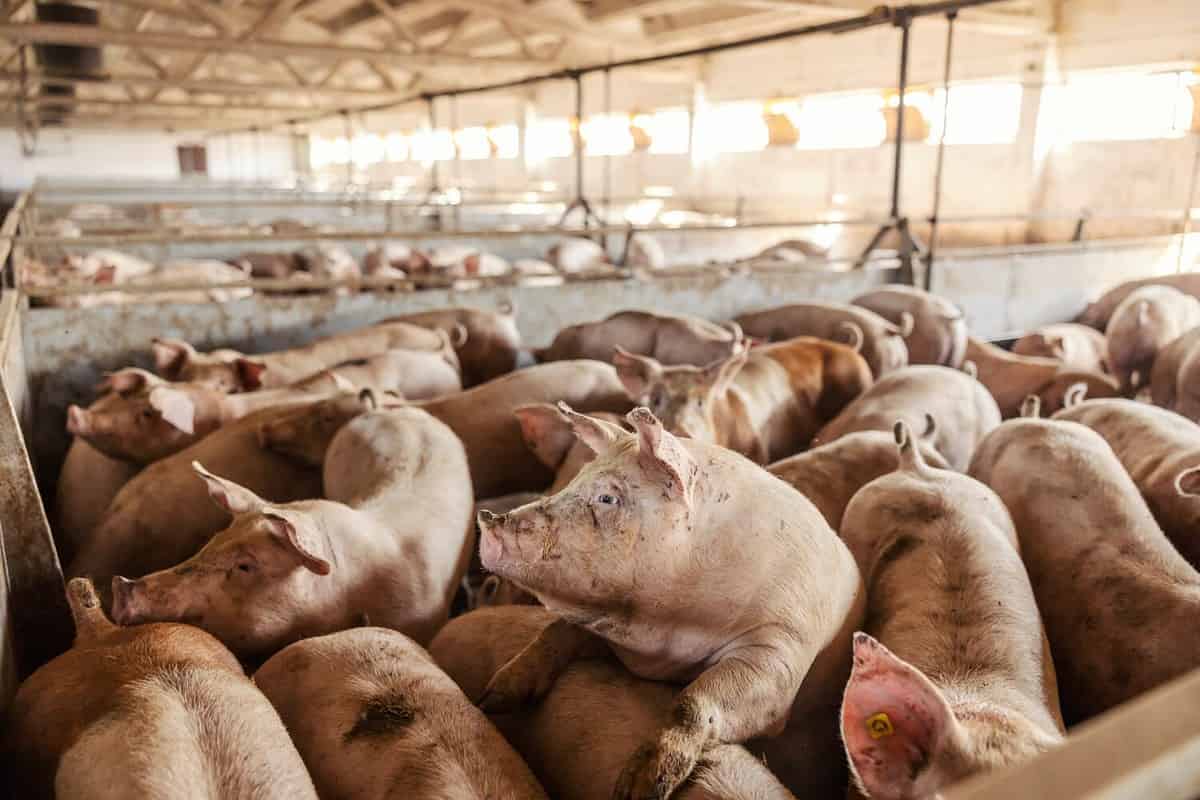
Pigs were the first animals to be domesticated!
©Dusan Petkovic/Shutterstock.com
What is Beef?
Beef is the name given to the meat that is acquired from cows. Beef cattle are often raised for butchering and processing of the meat to eat. Usually, the cows are grown or close to being grown before they are slaughtered.
Beef is one of the most popular types of meat, and there are eight types of primal beef cuts. These are shank, brisket, flank, round, loin, rib, chuck, and plate. From there come different processes, including ground beef, sirloin steak, brisket, chuck roast, ribs, and more.
The texture of beef can be flavorful, chewy, and tender. But, of course, it all depends on the cut of meat that you buy. The taste of beef is also very robust, gamey, and meaty.
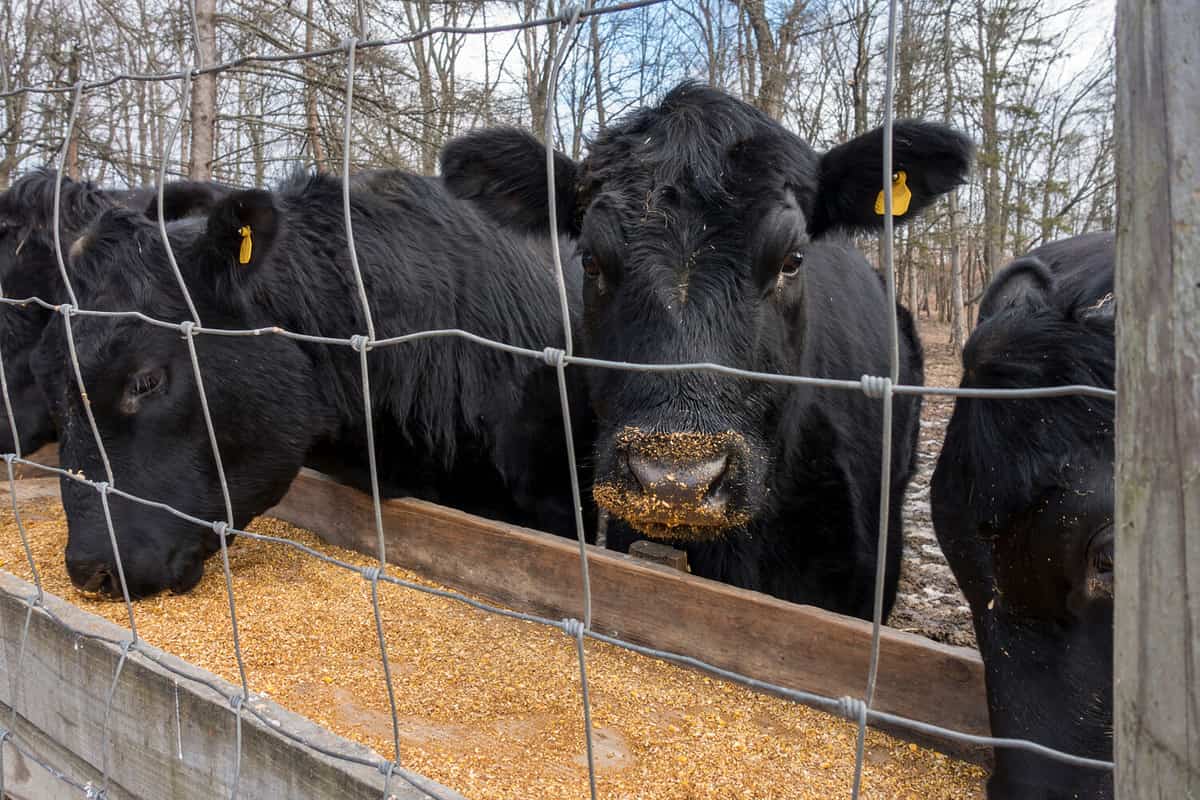
Cows are raised on farms for several reasons; one of the main ones is for their beef.
©Brandt Bolding/Shutterstock.com
Can You Substitute Pork for Beef?
It is a possibility to substitute pork and beef in a recipe. However, you will need to keep in mind a few things.
The first thing to remember is that if you substitute one for the other, the flavor and texture will be different. For example, pork has a sweet undertone less intense than beef. Beef, on the other hand, is very robust.
- The must-have convenient reference guide for every home cook!
- Includes more than 8,000 substitutions for ingredients, cookware, and techniques.
- Save time and money on by avoiding trips to grab that "missing" ingredient you don't really need.
Another consideration will be in the cook times. The times will vary depending on the cut of meat and the recipe. However, as a rule of thumb, it is important to remember pork needs to reach an internal temperature of 145 degrees Fahrenheit, whereas beef needs to reach 160 degrees Fahrenheit.
Both beef and pork have a decadent, intense, and meaty flavor that can be an excellent addition to any meal.
What are Substitutes for Pork?
Maybe you are growing tired of pork, want something a bit healthier, or do not eat pork; if this is the case, there are many great substitutes.
If you want something healthier, try ground turkey or turkey in general. Chicken is also a great alternative and offers more health benefits than pork. Lean ground beef can be a fantastic alternative as well.
If you would like to go meatless but still want the texture of meat, tofu or seitan can be fantastic substitutes to try!
What are Substitutes for Beef?
If you are looking for a substitute for beef, there are plenty to choose from. However, try turkey or chicken if you want something a bit healthier.
Also, if you want the health benefits but do not want to eat the meat, there are more substitutes to try. Mushrooms, grains, lentils, and tofu offer excellent health benefits, are low-calorie, and let you omit meat altogether.
In Conclusion
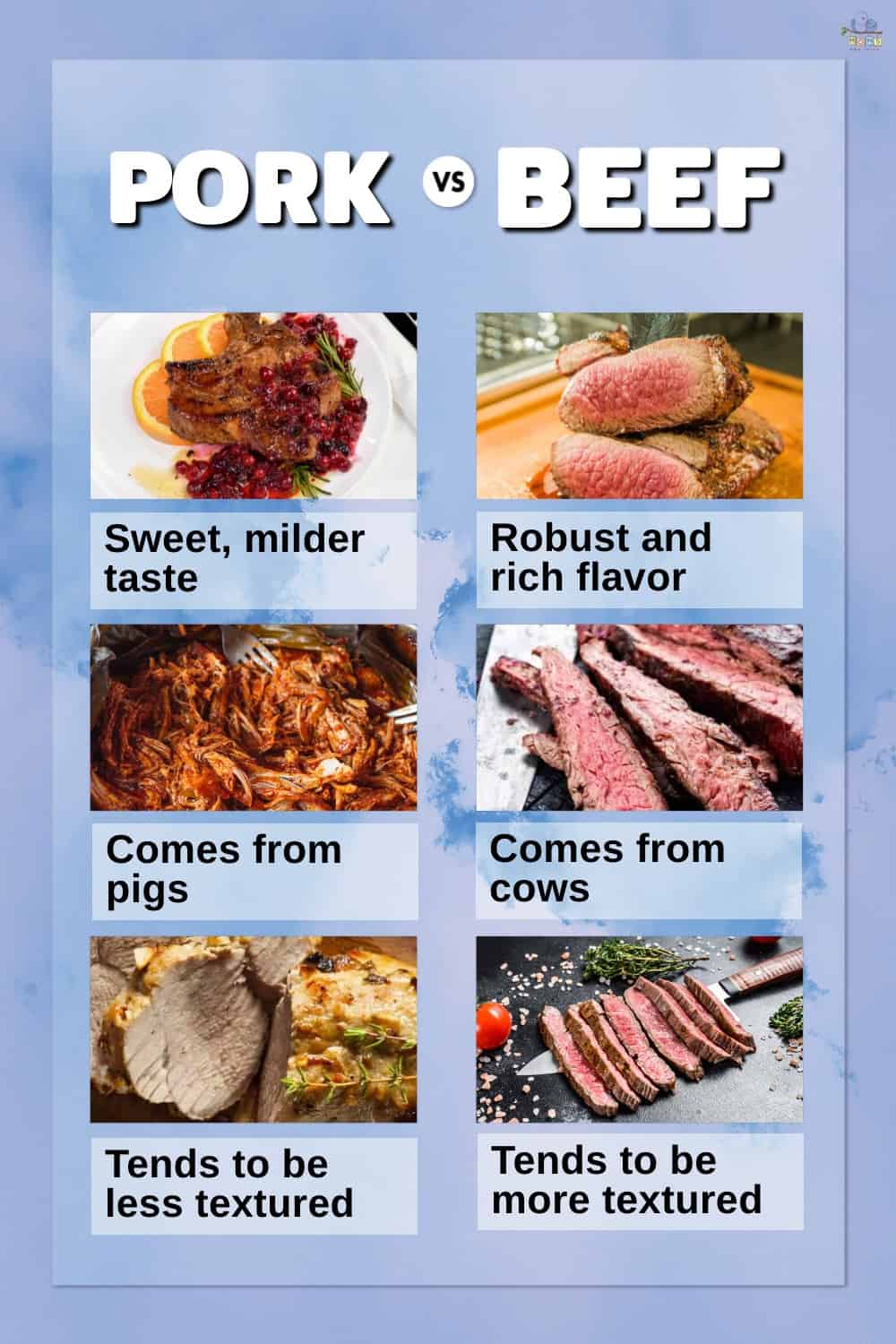
- The taste of pork and beef can vary depending on the cut, but pork usually has a milder and sweeter taste compared to beef.
- Pork always comes from pigs, while beef is sourced from cows.
- While it depends on the cut, pork tends to be less textured than beef.
Thirty billion pounds of meat is consumed in the United States a year. Of that, 57 pounds of beef is consumed per person annually, and 51 pounds of pork is consumed per person in the United States annually. With that in mind, meat plays a vital role in the meals of everyday people.
Both pork and beef contain essential vitamins and nutrients for daily consumption. They can be a great way to receive protein, iron, B12, B6, and many more nutrients. However, beef and pork can also be high in fat content and calories. Therefore, when deciding what to cook for dinner, it is possible to choose lean beef and pork options.
Cows and pigs provide plenty of benefits for us, which is one reason so many farms exist! Whether you like beef or pork, one thing is for sure; there are many cuts of meat to choose from regarding both protein-packed types of meat.
Looking for a great way to add pork to next week's menu? Check out this recipe:
PrintPork Tenders with Honey Mustard Sauce
Ingredients
For the Pork Tenders:
1 quart peanut or vegetable oil
1 1/2 cups flour
1 1/2 cups cornstarch
2 teaspoons Lawry’s Seasoned Salt
1 teaspoon ground black pepper (optional)
2 eggs, well beaten
6 Tablespoons milk
3/4 package Chicken in a Biskit crackers, crushed, or other seasoned crackers
8 4-oz boneless center cut pork chops/pork loin slices, tenderized *cut these into 3-4 strips per 4 oz. loin slice, lengthwise
additional seasoned salt or sea salt for sprinkling post-frying
For the Honey Mustard Dipping Sauce:
2/3 cup honey
3 tbsp yellow mustard
1 tbsp dijon mustard
Instructions
Directions for Pork Tenders:
1. Heat oil to 350 degrees in a large, heavy-bottomed skillet.
2. Combine flour and cornstarch in a large glass baking dish.
3. Add Lawry’s and pepper. In a separate baking dish add beaten eggs and milk, mix together.
4. In a third baking dish, add crushed crackers plus 5 TBSP of flour/cornstarch mixture. Mix well.
5. Dredge each piece of tenderized pork in flour, shake excess.
6. Dip in egg/milk mixture, shake excess.
7. Dredge in cracker crumb mixture.
8. Place on clean plate and repeat with other pieces until complete.
9. When ready to fry, be sure oil is 350 degrees.
10. Fry 4-6 pieces or 1 large piece of meat at a time in 350 degree oil, for 2 minutes and until golden brown. Use a meat thermometer to test doneness, at least 145 degrees.
11. Remove to paper towel lined plate. Serve immediately with honey mustard dipping sauce.
Directions for the Honey Mustard Dipping Sauce:
1. Combine honey and mustard in a bowl. Stir well. Serve at room temperature.
Notes
This is the reason for the 50/50 cornstarch coating in this recipe. When it comes to coating chicken or pork for cooking — particularly for fried — flour is the common go-to, but if you want very crisp, crunchy skin, cornstarch is the better option. Cornstarch is a pure starch often used as a thickening agent for sauces and soups, and is commonly used in Asian cooking for stir-fries. When used to fry chicken or pork , it helps with browning and creates a super crisp crust that seals in the juices of the chicken or pork.
Beef Posts
- Which Iron Source To Choose? Beef Liver vs. Chicken Liver
- Beef vs Steak: What's the Difference Between the Two
- Great Beef Recipes Using a Crock Pot
- Creamy Slow Cooked Garlic Beef Stroganoff Recipe)
- Wagon Wheel Beef Pasta Recipe
Pork Posts
- Pork Loin vs. Tenderloin: Is There Really A Difference Between The Two?
- 20 Side Dishes for Pulled Pork Sandwiches
- Pork vs. Chicken: Key Differences and Nutritional Benefits
- Pork Steaks vs Pork Chops: What to Know
- Side Dishes for Fried Pork Chops
